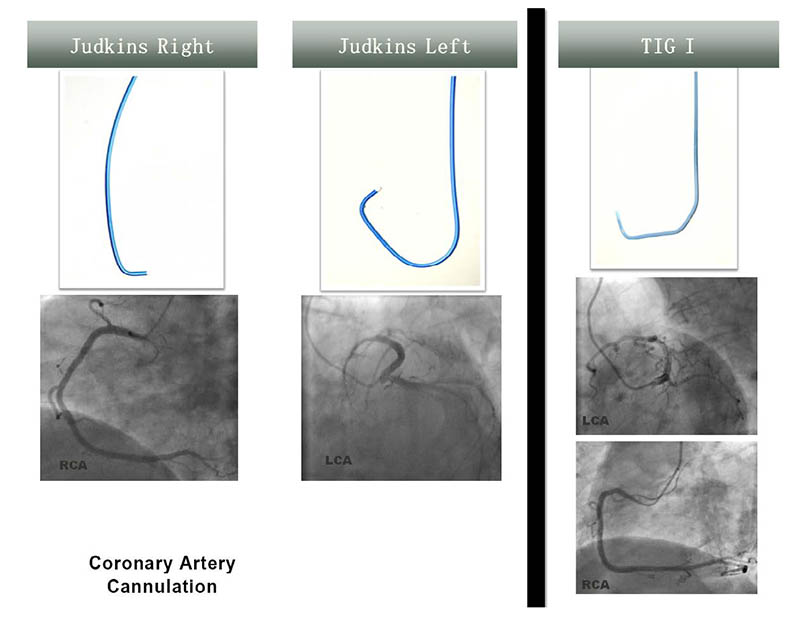Volume 113, Nº 5, November 2019
DOI: http://www.dx.doi.org/10.5935/abc.20190232
ORIGINAL ARTICLE
Impact of One-Catheter Strategy with TIG I Catheter on Coronary Catheterization Performance and Economic Costs
Joan Costa-Mateu
Diego Fernández-Rodríguez
Kristian Rivera
Juan Casanova
Patricia Irigaray
Marta Zielonka
Eduardo Pereyra-Acha
Albina Aldomà
Fernando Worner

Figure 1 – Design of TIG I and Judkins catheters and cannulation of the coronary arteries. RCA: right coronary artery; LCA: left coronary artery.
Abstract
Background: Coronary angiography with two catheters is the traditional strategy for diagnostic coronary procedures. TIG I catheter permits to cannulate both coronary arteries, avoiding exchanging catheters during coronary angiography by transradial access.
Objective: The aim of this study is to evaluate the impact of one-catheter strategy, by avoiding catheter exchange, on coronary catheterization performance and economic costs.
Methods: Transradial coronary diagnostic procedures conducted from January 2013 to June 2017 were collected. One-catheter strategy (TIG I catheter) and two-catheter strategy (left and right Judkins catheters) were compared. The volume of iodinated contrast administered was the primary endpoint. Secondary endpoints included radial spasm, procedural duration (fluoroscopy time) and exposure to ionizing radiation (dose-area product and air kerma). Direct economic costs were also evaluated. For statistical analyses, two-tailed p-values < 0.05 were considered statistically significant.
Results: From a total of 1,953 procedures in 1,829 patients, 252 procedures were assigned to one-catheter strategy and 1,701 procedures to two‑catheter strategy. There were no differences in baseline characteristics between the groups. One-catheter strategy required less iodinated contrast [primary endpoint; (60–105)-mL vs. 92 (64–120)-mL; p < 0.001] than the two-catheter strategy. Also, the one-catheter group presented less radial spasm (5.2% vs. 9.3%, p = 0.022) and shorter fluoroscopy time [3.9 (2.2–8.0)-min vs. 4.8 (2.9–8.3)-min, p = 0.001] and saved costs [149 (140–160)-€/procedure vs. 171 (160–183)-€/procedure; p < 0.001]. No differences in dose-area product and air kerma were detected between the groups.
Conclusions: One-catheter strategy, with TIG I catheter, improves coronary catheterization performance and reduces economic costs compared to traditional two-catheter strategy in patients referred for coronary angiography. (Arq Bras Cardiol. 2019; 113(5):960-968)
Keywords: Cineagiography/methods; Cardiac Catheterization/economic; Radiation, Ionizing;; Fluoroscopy; Cost Savings/economic.















